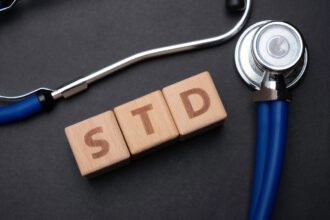There has never been a more pronounced period of transformation and change across the U.S.
There has never been a more pronounced period of transformation and change across the U.S. healthcare system than over the past several years. Prompted by the increase and acceleration of healthcare costs nationally, the demand for automation and greater care and administrative efficiencies has escalated to historic levels. At the same time the federal government mandated a rapid expansion of new clinical documentation standards and created a permanent CMS regulatory apparatus designed to improve payment integrity levels through auditing and analyzing the coding and medical necessity practices of provider organizations.
The most dramatic accelerant to transforming the healthcare industry, however, has been the proliferation of new value-based initiatives designed to tie both government and commercial reimbursement to the quality of clinical outcomes. The formation of ACOs and other healthcare provider entities that are responsible for delivering a broad continuum of care for patients, while bearing some financial risk for the care provided, was one of the core objectives of the ACA legislation and serves as a basis for which all constituencies (i.e., physicians, provider organizations, payers, and vendors) are aligning themselves.
As these new payment models emerge, healthcare providers in particular are faced with a daunting challenge. To effectively track, measure, and improve outcomes and quality, an unprecedented level of clinical data automation and interoperability is required. For instance, access to comprehensive, highly specific patient-level data requires:
- Communication among disparate clinical and financial systems
- Aligning hundreds of varying industry code sets and standards
- Connecting a wide diversity of users including physicians, nurses, pharmacists, coding specialists, and administrators with healthcare informaticists who can interact, modify, and interpret the universe of available data in vastly different ways.

The acceleration of EHR adoption brought on by over $19 billion of HITECH stimulus funding has certainly helped to increase the industry’s basic level of IT adoption and pull a greater amount of clinical information out of paper charts and into a digital format. While this has been a positive step forward overall, EHR systems are ultimately based on structured templates, drop-down menus, check boxes, and radio buttons that document a certain amount of clinical information; meaning they fall short of capturing the patient’s comprehensive clinical narrative. In fact, the principal function and justification of EHRs has historically been to capture coded diagnostic and procedure data used primarily for billing purposes.
The result has been a hindrance to physician workflows without any meaningful benefit to clinical decision-making and outcomes.
As a consequence, the enablement of healthcare’s emerging value-based paradigm will rely not on structured EHR data alone, but on accessing the vast amount of clinical insight found in unstructured text, such as typed, transcribed, and dictated notes. As shown in the illustaration below, significant amount of clinical value resides in these unstructured sources of information, including the physician’s history and physical notes, patient progress notes, operative notes, discharge summaries, and a wide variety of ancillary diagnostic reports (e.g., radiology reports, cardiology reports, etc.). Extracting the meaning and context of information found in these free text documents enables a level of transparency and decision-making potential far beyond what the EHR is capable of supporting on its own.
Effectively accessing, mining, and comprehending the meaning of this information within the context of patient or patient population specific attributes is absolutely critical to the success of several interrelated objectives underlying value, or quality-based, care delivery and compliance.
While these trends are shaping and transforming the healthcare industry for the better, they are also exposing an enormous challenge. Healthcare provider organizations must finance and rapidly adopt systems and processes that effectively enable and enhance the existing levels of clinical documentation granularity, accuracy, and reporting. Clinical documentation serves as the basis and key enabler to a value-based reimbursement system. One of the industry challenges we’re exploring given our focus on this space includes how providers and innovative vendors alike are deriving true insight from the patient’s comprehensive clinical narrative while minimizing the impact on clinical and administrative workflows.
Let us know what you think.








